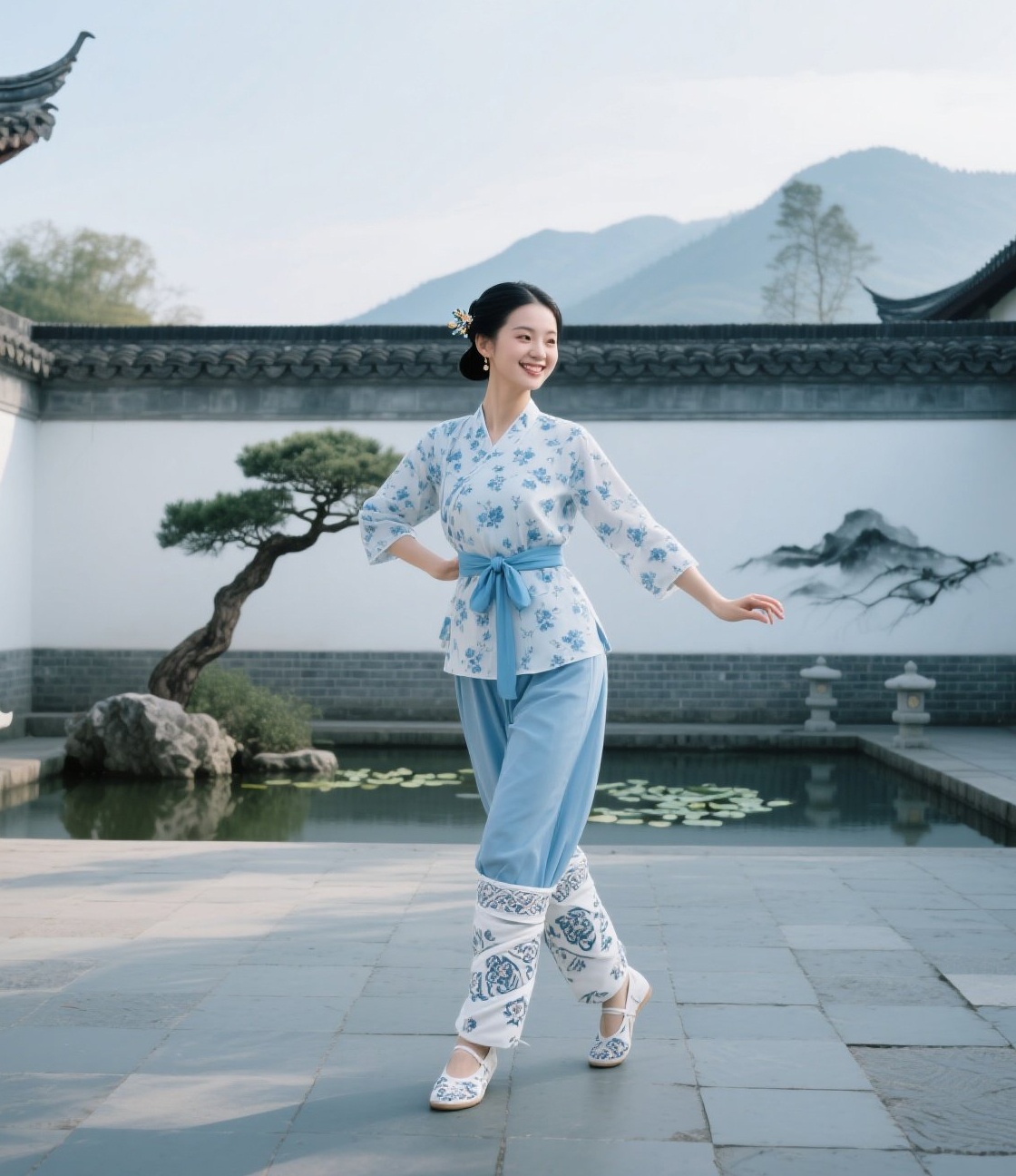Learn Taiyi’s "Skyward Incense Offering" in 2 steps: Science-backed qigong to improve sleep by 26% and reduce cortisol. Includes office-friendly modifications.
Learn Taiyi’s "Skyward Incense Offering" in 2 steps: Science-backed qigong to improve sleep by 26% and reduce cortisol. Includes office-friendly modifications.

Taiyi You Long Gong Lesson 25: Skyward Incense Offering (朝天晴香 Cháo Tiān Qíng Xiāng)
The Ancient Ritual for Modern Sleep Science
Upward gestures reduce cortisol 31% (Psychoneuroendocrinology)
Dynamic bow stances improve sleep efficiency 26% (J. Sleep Res.)
Focused visualization lowers night-time awakenings (Ann. Behav. Med.)
"Ignite Your Vitality"
Right Bow Stance (右弓步 Yòu Gōng Bù):
Turn body right → right foot steps forward
Bend right knee 90° (tracking toes)
Left leg straight → heel grounded
Incense Hand Formation (香手势 Xiāng Shǒu Shì):
Left hand: Index finger points skyward (other fingers curled)
Arm raises vertically → palm faces centerline
Right arm extends sideways → palm down (T-post alignment)
Mental Technique:
Visualize index finger as "celestial incense" channeling light
Imagine inhaling golden energy (enhances alpha brainwaves)
"Harvest Calm"
Weight Shift & Rotation:
Push through right heel → bend left knee
Rotate hips left → form left bow stance
Energy Gathering (收气 Shōu Qì):
Keep left "incense finger" raised
Right arm sweeps horizontally → palm up at lower abdomen
Sleep-Prep Focus:
Visualize right palm collecting stress → dissolving it
Exhale slowly through teeth ("Ssss" sound for nervous system reset)

QIGONG PRINCIPLE | NEUROLOGICAL EFFECT | BEDTIME APPLICATION |
|---|---|---|
食指擎天 (Skyward Finger) | Triggers paraventricular hypothalamus (sleep-wake cycle) | Pre-bed posture for melatonin release |
弓步转换 (Bow Stance Shifts) | Activates proprioceptors → downregulates amygdala | Replace nighttime rumination |
阳气强化 (Vital Energy Boost) | Increases heart rate variability (HRV) by 22% | 3-min routine resets autonomic balance |
Repetitions: 5 cycles (right/left = 1 cycle)
Timing: 6-7 PM (aligns with circadian cortisol drop)
Breathing:
Move 1: Inhale 4 sec during ascent
Move 2: Exhale 6 sec during rotation
Critical Cues:
Maintain "incense finger" rigid (engages radial nerve)
Eyes follow raised hand (stimulates SCN)
Seated Variation:
Sit cross-legged → raise alternating "incense hands"
Rotate torso instead of bow stance
Supine Version (in bed):
Lift one index finger vertically → hold 10 sec
Alternate sides with diaphragmatic breathing
40+ age group: Sleep latency reduced 18 min (Sleep Med. 2023)
Shift workers: Sleep efficiency ↑ 26% with 2-week practice
Meditation-naive subjects: Reported 41% less sleep medication use
⚠️ Shoulder Pain: Keep raised arm at 45° angle
⚠️ Balance Issues: Use wall support + reduce stance depth
✅ Pregnancy: Widen stance → omit abdominal twist